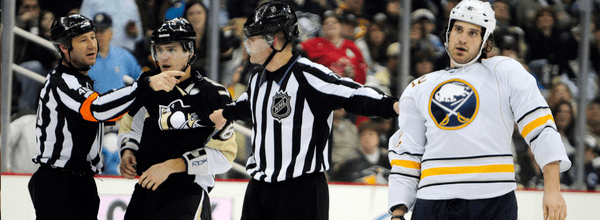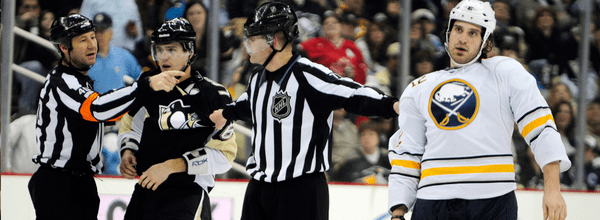The Visor Debate: Safety in the Workplace?


The Visor Debate
Adam Schwartz
Safety in the work place is an issue in many jobs, but the National Hockey League doesn’t even come close to doing all that it can to protect its assets, which leads us to the age-old visor debate.
Can you imagine a welder who didn’t wear a mask because he claimed it got in the way of his work? I’m sure his union would be up in arms about that one.
How about a doctor who didn’t feel like wearing gloves during surgery because he thought he could grip a scalpel better? Sure sounds like a lawsuit to me.
Yet the NHL still allows players to play without a visor, primarily because the players themselves want to, and if they get hurt then it’s their own fault. There is a catch here though, which is they aren’t just hockey players. They are investments to their organizations and not just financially.
Organizations are also making a hockey investment when they sign a player to a contract. If this player gets hurt because he didn’t wear a visor that means a club either wasted a draft pick, or signed the player via free agency and passed on other they could have signed.
While the stubborn players steadfastly refuse a mandatory visor rule in the NHL, there is one in the NHL’s main feeder league, the American Hockey League, that was only instituted after Anaheim Ducks prospect Jordan Smith lost sight in his left eye in 2006. A majority of the NHL’s players spend at least some time in the AHL, so they are now forced to get used to these visors. This debunks the I-only-feel-comfortable-playing-without-a-visor myth.
Buffalo winger Mark Mancari is the perfect example of a player who is unwilling to change his ways. Mancari has played 56 games this season with a visor for the Portland Pirates in the AHL this season scoring 32 goals and adding 32 assists earning him a promotion to the Sabres. As soon as Mancari is called up to the big time he ditched the visor.
Mancari swears that it’s a comfort issue, but concedes that he is under pressure from family to put the visor back on.
“Some guys have sworn by them,” Mancari told Olean Times Herald. “They won’t take them off. Like myself, it’s a comfort issue. Maybe one day I’ll get into one. My wife and my family definitely want me in one. So we’ll see what happens.”
Every season player suffers eye injuries, and resorts to using Pure optical contact lenses for the rest of their sport’s career because sometimes, the board deems glasses a hindrance in a gameplay. Recently, Manny Malhotra was lost to the Canucks for the season after he was hit with a stray puck. Malhotra was signed by the Canucks during the summer to a three-year contract worth $2.5 million per season and Vancouver is having arguably their best season in franchise history. Now their chances of winning the Stanley Cup have decreased because of an avoidable injury.
The younger players, however, are getting smarter. According to a poll conducted by The Hockey News in December 65 percent of players younger than 30 opt for the additional protection. Meanwhile, only 45 percent of players older than 30 chose the visor.
Even the variations of visors provide different levels of safety. Take a gander at Sidney Crosby’s upward tilted visor compared to Colin White’s facial protection and think about who is the better protected player.
Aren’t there already enough injuries in hockey?